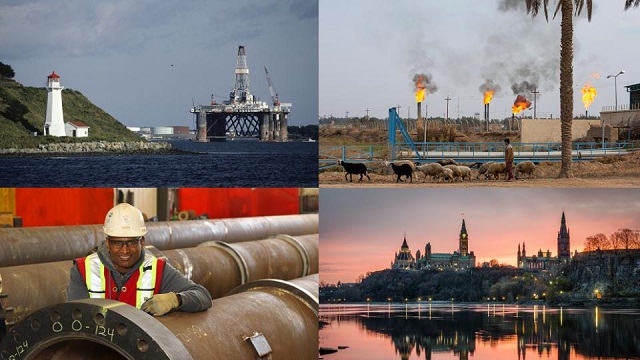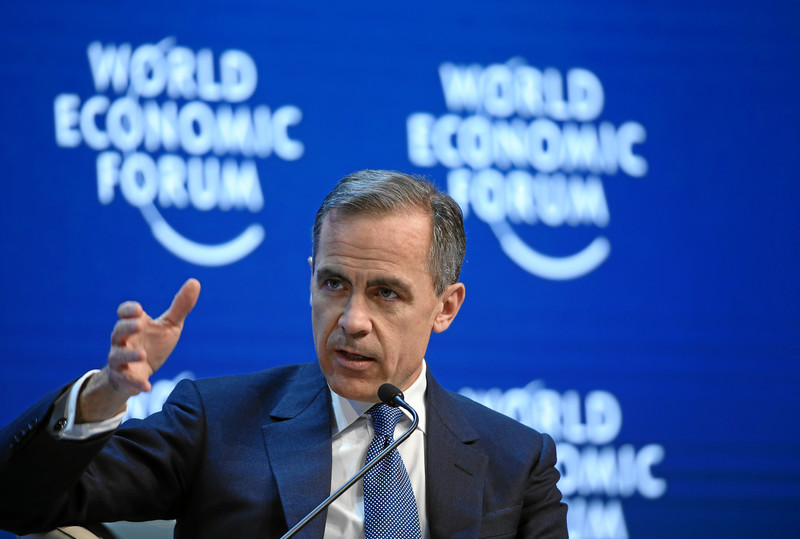Alberta
25 facts about the Canadian oil and gas industry in 2023: Facts 11 to 15

From the Canadian Energy Centre
One of the things that really makes us Albertans, and Canadians is what we do and how we do it. It’s taking humanity a while to figure it out, but we seem to be grasping just how important access to energy is to our success. This makes it important that we all know at least a little about the industry that drives Canadians and especially Albertans as we make our way in the world.
The Canadian Energy Centre has compiled a list of 25 (very, extremely) interesting facts about the oil and gas industry in Canada. Over the 5 days we will post all 25 amazing facts, 5 at a time. Here are facts 11 to 15.
The Canadian Energy Centre’s 2023 reference guide to the latest research on Canada’s oil and gas industry
The following summary facts and data were drawn from 30 Fact Sheets and Research Briefs and various Research Snapshots that the Canadian Energy Centre released in 2023. For sources and methodology and for additional data and information, the original reports are available at the research portal on the Canadian Energy Centre website: canadianenergycentre.ca.
11. Breakeven costs in Canadian natural gas sector fifth lowest in the world
The Canadian natural gas sector had a weighted average breakeven gas price of US$2.31 per thousand cubic feet (mcf) in 2022, fifth lowest among major natural gas producing countries. Only in Saudi Arabia (US$1.09 per mcf), Iran (US$1.39 per mcf), Qatar (US$1.93 per mcf), and the United States (US$2.22 per mcf) was the breakeven gas price lower. The weighted average breakeven costs for Canada‘s natural gas sector in 2022 were lower than in Russia, Norway, Algeria, China, and Australia.

Source: Derived from Rystad Energy
12. Natural gas prices have skyrocketed
Natural gas prices have skyrocketed around the world in the last two years. In 2021, the price of natural gas in Asia was US$18.60 per million British thermal units (mmbtu) compared to US$4.40 per mmbtu in 2020—an increase of 323 per cent in just one year. By comparison, in 2021 natural gas sold for US$2.80 per mmbtu on Alberta’s AECO-C trading hub; in Asia it was US$15.88 per mmbtu more (or 564 per cent higher). Between 2019 and 2021, the price gap between Henry Hub in the US and AECO-C natural gas fluctuated from a high of 98 per cent in 2019 to a low of 26 per cent in 2020. In 2021, U.S. natural gas sold for US$3.84 per mmbtu, 40 per cent higher than the US$2.75 per mmbtu average price for AECO-C natural gas that year.

Sources: BP Statistical Review of World Energy and International Monetary Fund
13. Projected government revenues from the Canadian natural gas sector: over US$227 billion through 2050
Government revenues from the Canadian natural gas sector are projected to reach over US$227 billion through 2050. Under a Henry Hub price for natural gas of US$3.00 per thousand cubic feet (kcf), government revenues from the country’s natural gas sector are expected to rise from US$1.4 billion in 2023 to US$3.4 billion in 2050. Should the Henry Hub price reach US$4.00 per kcf, government revenues from the country’s natural gas sector would be projected to rise from US$2.0 billion in 2023 to US$10.0 billion in 2050.

Source: Derived from Rystad Energy
14. Small business plays a key role in the oil and gas sector
Small business plays a key job creation role in Canada’s economy. Statistics Canada defines small businesses as those with between one and 99 paid employees. Medium-size enterprises are those with 100 to 499 employees, while large enterprises have 500 or more employees. In 2022, of the oil and gas firms in Canada, 96.0 per cent were small, 3.5 per cent were medium-sized, and 0.6 per cent were large companies.
With the exception of construction, the oil and gas sector in Canada has a higher proportion of small businesses than other major industries. As of 2022, 96.0 per cent of all oil and gas energy firms had between 1 and 99 employees compared with 93.2 per cent in manufacturing, 89.6 per cent in utilities, and 99.0 per cent in the construction sector. The all-industry average is 98.0 per cent.

Source: Authors’ calculation based on Statistics Canada Table 33-10-0661-01
15. Canada’s oil and gas sector has an impact on key industries across the Canadian economy
In 2019, the activities of the Canadian oil and gas sector were indirectly responsible for significant portions of the GDP created by other key industries across Canada. The sector’s activities generated $100.9 million in GDP in the food and beverage merchant wholesalers industry that year and nearly $4.1 billion in GDP in architectural, engineering, and related services. In 2019, the top five industries whose GDP was most affected by their association with Canada’s oil and gas sector included:
- Architectural, engineering, and related services: $4.1 billion
- Machinery, equipment, and supplies merchant wholesalers: $3.4 billion
- Banking and other depository credit intermediation: $2.1 billion
- Computer systems design and related services: $1.7 billion
- Electrical power generation, transmission, and distribution: $1.5 billion

Source: Statistics Canada
CEC Research Briefs
Canadian Energy Centre (CEC) Research Briefs are contextual explanations of data as they relate to Canadian energy. They are statistical analyses released periodically to provide context on energy issues for investors, policymakers, and the public. The source of profiled data depends on the specific issue. This research brief is a compilation of previous Fact Sheets and Research Briefs released by the centre in 2023. Sources can be accessed in the previously released reports. All percentages in this report are calculated from the original data, which can run to multiple decimal points. They are not calculated using the rounded figures that may appear in charts and in the text, which are more reader friendly. Thus, calculations made from the rounded figures (and not the more precise source data) will differ from the more statistically precise percentages we arrive at using the original data sources.
About the author
This CEC Research Brief was compiled by Ven Venkatachalam, Director of Research at the Canadian Energy Centre.
Acknowledgements
The author and the Canadian Energy Centre would like to thank and acknowledge the assistance of an anonymous reviewer for the review of this paper.
Alberta
Big win for Alberta and Canada: Statement from Premier Smith

Premier Danielle Smith issued the following statement on the April 2, 2025 U.S. tariff announcement:
“Today was an important win for Canada and Alberta, as it appears the United States has decided to uphold the majority of the free trade agreement (CUSMA) between our two nations. It also appears this will continue to be the case until after the Canadian federal election has concluded and the newly elected Canadian government is able to renegotiate CUSMA with the U.S. administration.
“This is precisely what I have been advocating for from the U.S. administration for months.
“It means that the majority of goods sold into the United States from Canada will have no tariffs applied to them, including zero per cent tariffs on energy, minerals, agricultural products, uranium, seafood, potash and host of other Canadian goods.
“There is still work to be done, of course. Unfortunately, tariffs previously announced by the United States on Canadian automobiles, steel and aluminum have not been removed. The efforts of premiers and the federal government should therefore shift towards removing or significantly reducing these remaining tariffs as we go forward and ensuring affected workers across Canada are generously supported until the situation is resolved.
“I again call on all involved in our national advocacy efforts to focus on diplomacy and persuasion while avoiding unnecessary escalation. Clearly, this strategy has been the most effective to this point.
“As it appears the worst of this tariff dispute is behind us (though there is still work to be done), it is my sincere hope that we, as Canadians, can abandon the disastrous policies that have made Canada vulnerable to and overly dependent on the United States, fast-track national resource corridors, get out of the way of provincial resource development and turn our country into an independent economic juggernaut and energy superpower.”
Alberta
Energy sector will fuel Alberta economy and Canada’s exports for many years to come

From the Fraser Institute
By any measure, Alberta is an energy powerhouse—within Canada, but also on a global scale. In 2023, it produced 85 per cent of Canada’s oil and three-fifths of the country’s natural gas. Most of Canada’s oil reserves are in Alberta, along with a majority of natural gas reserves. Alberta is the beating heart of the Canadian energy economy. And energy, in turn, accounts for one-quarter of Canada’s international exports.
Consider some key facts about the province’s energy landscape, as noted in the Alberta Energy Regulator’s (AER) 2023 annual report. Oil and natural gas production continued to rise (on a volume basis) in 2023, on the heels of steady increases over the preceding half decade. However, the dollar value of Alberta’s oil and gas production fell in 2023, as the surging prices recorded in 2022 following Russia’s invasion of Ukraine retreated. Capital spending in the province’s energy sector reached $30 billion in 2023, making it the leading driver of private-sector investment. And completion of the Trans Mountain pipeline expansion project has opened new offshore export avenues for Canada’s oil industry and should boost Alberta’s energy production and exports going forward.
In a world striving to address climate change, Alberta’s hydrocarbon-heavy energy sector faces challenges. At some point, the world may start to consume less oil and, later, less natural gas (in absolute terms). But such “peak” consumption hasn’t arrived yet, nor does it appear imminent. While the demand for certain refined petroleum products is trending down in some advanced economies, particularly in Europe, we should take a broader global perspective when assessing energy demand and supply trends.
Looking at the worldwide picture, Goldman Sachs’ 2024 global energy forecast predicts that “oil usage will increase through 2034” thanks to strong demand in emerging markets and growing production of petrochemicals that depend on oil as the principal feedstock. Global demand for natural gas (including LNG) will also continue to increase, particularly since natural gas is the least carbon-intensive fossil fuel and more of it is being traded in the form of liquefied natural gas (LNG).
Against this backdrop, there are reasons to be optimistic about the prospects for Alberta’s energy sector, particularly if the federal government dials back some of the economically destructive energy and climate policies adopted by the last government. According to the AER’s “base case” forecast, overall energy output will expand over the next 10 years. Oilsands output is projected to grow modestly; natural gas production will also rise, in part due to greater demand for Alberta’s upstream gas from LNG operators in British Columbia.
The AER’s forecast also points to a positive trajectory for capital spending across the province’s energy sector. The agency sees annual investment rising from almost $30 billion to $40 billion by 2033. Most of this takes place in the oil and gas industry, but “emerging” energy resources and projects aimed at climate mitigation are expected to represent a bigger slice of energy-related capital spending going forward.
Like many other oil and gas producing jurisdictions, Alberta must navigate the bumpy journey to a lower-carbon future. But the world is set to remain dependent on fossil fuels for decades to come. This suggests the energy sector will continue to underpin not only the Alberta economy but also Canada’s export portfolio for the foreseeable future.
-

 2025 Federal Election1 day ago
2025 Federal Election1 day agoMark Carney refuses to clarify 2022 remarks accusing the Freedom Convoy of ‘sedition’
-

 2025 Federal Election1 day ago
2025 Federal Election1 day agoPoilievre To Create ‘Canada First’ National Energy Corridor
-

 Bruce Dowbiggin1 day ago
Bruce Dowbiggin1 day agoAre the Jays Signing Or Declining? Only Vladdy & Bo Know For Sure
-

 2025 Federal Election1 day ago
2025 Federal Election1 day agoFixing Canada’s immigration system should be next government’s top priority
-

 Daily Caller1 day ago
Daily Caller1 day agoBiden Administration Was Secretly More Involved In Ukraine Than It Let On, Investigation Reveals
-

 2025 Federal Election2 days ago
2025 Federal Election2 days agoCanada Continues to Miss LNG Opportunities: Why the World Needs Our LNG – and We’re Not Ready
-

 2025 Federal Election2 days ago
2025 Federal Election2 days agoMark Carney is trying to market globalism as a ‘Canadian value.’ Will it work?
-

 International1 day ago
International1 day agoGermany launches first permanent foreign troop deployment since WW2



